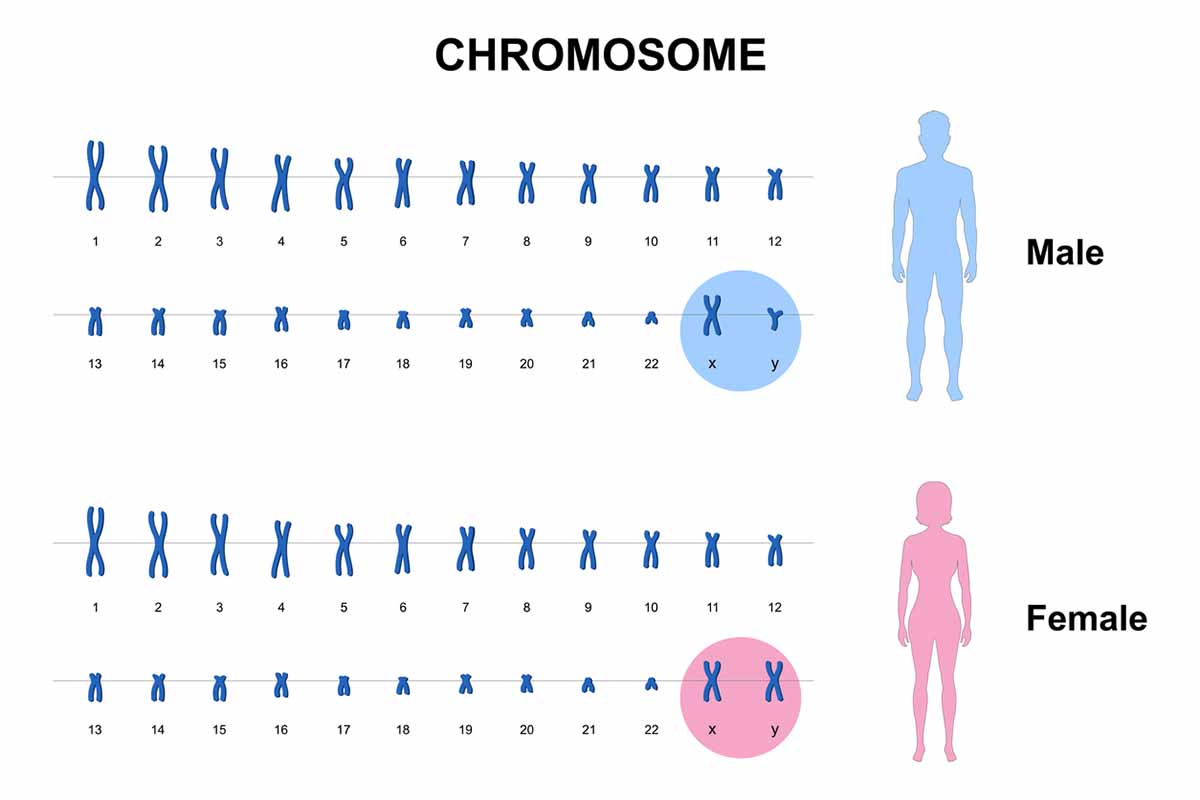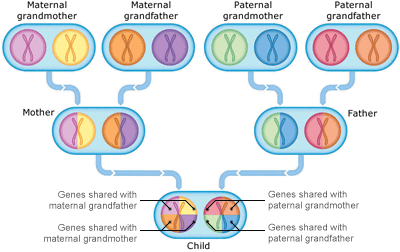How Genes Are Passed Through Generations: Understanding Your Genetics

If you’re expecting a baby, you will probably be wondering what your little girl or boy will look like — will they have your eye color or Dad’s nose shape?
You may be surprised when baby is born to see that they have some traits that you weren’t expecting. What if your baby looks nothing like either parent?
It’s possible that they have inherited gene from way back in your family tree either on the mother or father’s side. If you’re wondering how this is possible, it’s important to understand how traits can be passed down from past generations.
Just how are genes passed? It’s all to do with genetics.
Related: What Color Will My Baby's Eyes Be? A Genetic Explanation
How Are Genes Passed from Parents to Children?
The instructions for every single one of your traits – both ones we can see like hair color and ones we can’t like blood types, are coded for by information on a chemical called deoxyribonucleic acid, or DNA for short.
What is DNA and It Work?
DNA is neatly packaged up into bundles called chromosomes and stored away inside our cells. On each chromosome are regions, DNA sequences, that code for the proteins that determine our traits. These coding regions are called genes.
Most cells contain 23 pairs of chromosomes. One exception to this is the gametes (sex cells) –eggs and sperm – these contain one chromosome from each pair (half the amount).
Does Each Parent Provide Half of the DNA to Their Child?
When an egg cell or sperm cell is produced, during the process of meiosis, the chromosome pairs line up and one from each pair is randomly assigned to the gamete. This means that each egg and sperm produced has a different mixture of chromosomes from the parent.

One of the chromosome pairs are the sex chromosomes, which determine gender. These can either be X or Y. As biological women all have two X chromosomes their sex chromosomes are XX, and all eggs contain an X chromosome. Biological men are XY, so sperm can either carry an X or Y chromosome.
During fertilization the egg and sperm join together, forming a cell with a full complement of chromosomes that now forms the genetic blueprint for the new individual.
This single cell will undergo cell division and multiply many, many times to form a baby, who will have a genome made up of a mixture of genes inherited from its mother and father.
Even though half of a person’s genes come from each parent, some traits are more likely to be inherited from the mother or father.
Can Genes Be Passed Across Multiple Generations?
A baby won’t just inherit genetic information from its parents. The baby's parents, in turn, inherited half of their genes from each of their own parents so one-quarter of each person's genes, therefore, come from their grandparents.

This explains why traits run in families from one generation to the next.
What Does It Mean to Have “Strong” Genes?
Some traits seem to pop up again and again through generations, brown eyes is a good example. If just one parent has brown eyes then the odds are that their children will share this trait.
We sometimes say that these types of genes are “strong.”
If there are “strong” genes, then it stands to reason that there are also “weak” genes. Taking a more scientific approach, we can explain this by considering that many genes come in different versions, also called alleles.
Dominant Genes vs. Recessive Genes
Alleles can be dominant (strong) or recessive (weak). Using eye color as our example, the brown allele can be seen as being dominant with blue eyes being recessive.
This means that if one chromosome in the pair, or both, contains the brown allele then your trait, or phenotype, will be brown eyes. To have the blue eyes phenotype you must have two copies of the blue recessive allele.
A slight disclaimer here: as with a lot of things when it comes to genetics, in reality, eye color is more complicated than this as it is not inherited via a single gene but multiple ones that all interact with each other.
Can Traits Skip a Generation?
Recessive traits are more likely to skip generations. This is often the reason why babies surprise us with a trait that they get from a grandparent. We can use red hair as an example to explain what is going on here.
Red hair can be considered a recessive trait. Ginger or red hair is caused by inheriting two recessive alleles. In our example, let's say that both the baby's maternal grandmother and paternal grandfather have red hair.

Both grandparents pass a copy of this recessive allele to their children – the baby’s mother and father. However, because the parents also inherited a copy of another, dominant hair color allele from their other parent, they will not have red hair but will be a carrier.
Their children can end up with red hair if they both pass on the recessive red allele.
Related: What Color Hair Will My Baby Have? (A Genetics Guide)
How Are Genetic Disorders Inherited?
It’s not just the traits we can see that can be inherited, some medical conditions can be too. These genetic disorders, or genetic conditions, are caused by the inheritance of a ‘faulty’ gene, which is the result of a mutation in the DNA that causes a protein to not work as it should.
Just like other traits, genetic disorders can be dominant or recessive.
An example of a recessive genetic disorder is cystic fibrosis. This condition is caused by a faulty gene, the CFTR gene mutation, which makes mucus in the body more viscous than normal, resulting in breathing and digestion problems. Because it is recessive, you need two copies of the gene mutation to have the condition.
Approximately 1 in 35 Americans is a carrier of the CFTR gene mutation. However, people with only one copy of the gene mutation are called carriers and generally do not have any symptoms. They might not even though they are carriers.
If two carriers of the CFTR gene mutation have a baby together there is a 25% chance that they will both pass on the recessive allele and the baby will have cystic fibrosis.
Thanks to research initiated with the Human Genome Project, scientists have located the position of many specific genes linked to genetic diseases on the genome. Today, medical professionals can perform genetic tests and genetic screenings that can better determine if a person has a genetic disorder, or is a carrier.
—
For more information on better understanding genetics and your family tree, see our guide on How to Read Your Ancestory.com Results.